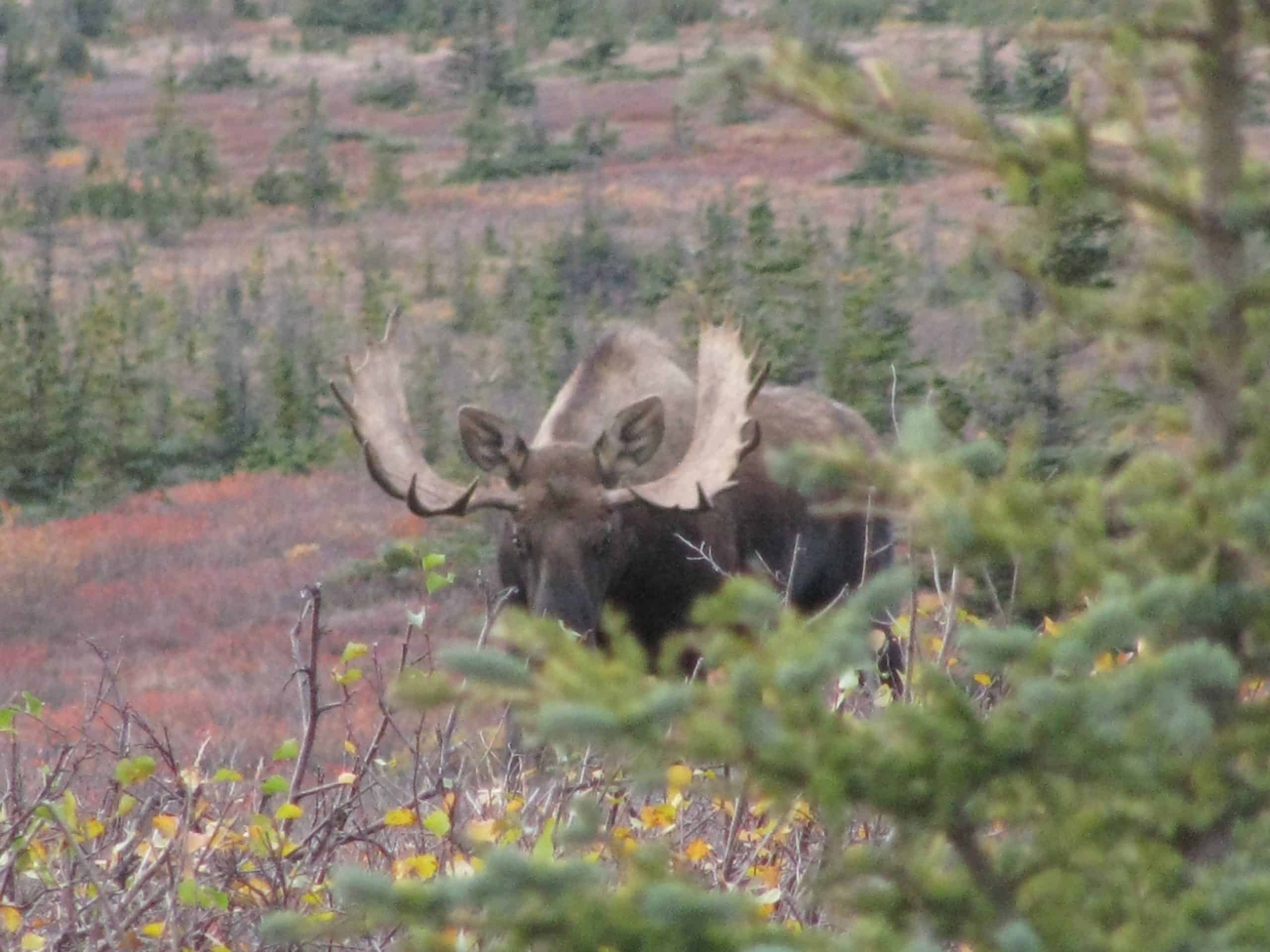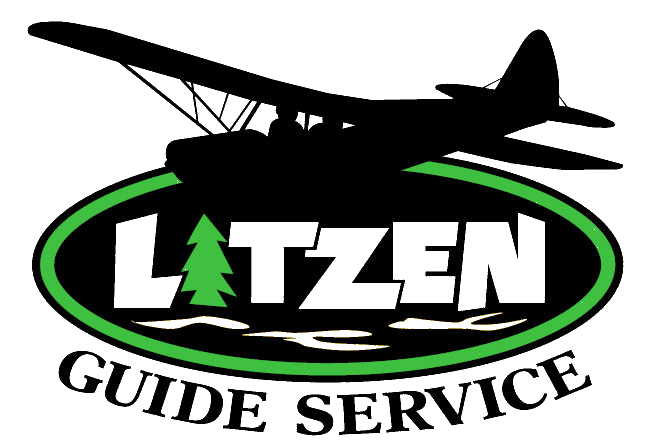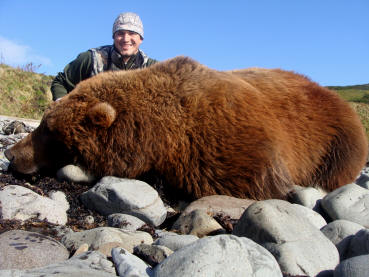Gear List
GEAR LIST FOR ALASKA HUNT WITH LITZEN GUIDE SERVICE
The following is a brief description of the gear you will need to be equipped with. Bring the best quality gear you can afford. Alaska can be a very wet, cold, and outright dangerous experience without the proper gear. We have included examples of gear brands that have successfully performed well for us in the past. These are definitely not the only options, but some of the more popular and proven. Quality gear could be the difference between a successful hunt and failure. The key is to dress in layers so that you can adjust to temperature to manage body heat and moisture. Being wet equates to being cold. To research the philosophy behind layering, visit the Arcteryx, Kuiu, or Sitka Gear websites. Research your gear and test it before the hunt.
Insulating layer, Mid Layer
1 pair lightweight long underwear, synthetic or merino wool
1 to 2 pair of midweight synthetic layers
Synthetics and Merino Wool are preferred for the long underwear insulating layer. You will need one long sleeve top and one set of bottoms. Then you will need one to two warmer synthetic or merino wool Mid layers for cooler temps to be worn under your jacket and pants. Bring no cotton layers into the field. Everyone has different temperature tolerances, if you get cold easily, bring extra or thicker layers to compensate. Packable, high loft layers such as MontBell Thermawrap, Rab Generator, and Patagonia MicroPuff are great options for Mid layers for all hunts, especially for cooler temps. Remember, temps could be below freezing, plan accordingly.
Examples, Long underwear:, Firstlite Wool, Cabela’s, Kuiu, , UnderArmour, Sitka, IceBreaker
Examples Mid Layer: Montbell, Rab, Kuiu, Sitka, Mountain Hardwear, Northface, Cabela’s
Soft-shell Outer wear
1 Jacket
1 Pant
This should be a medium weight, synthetic, jacket and pants. This will be used as your outer layer during most of the hunt. In windy or wet conditions your raingear will be worn over the top.
Examples: Mountain Hardwear, NorthFace, Sitka, Kuiu, Cabela’s, Mammut and many other outdoor companies using fabrics such as Gore Windstopper. Remember, the temps could be below freezing, plan accordingly.
Rain gear, hard shell
1 Jacket, hooded
1 Pant
This is going to be your best defense against weather, purchase the best quality you can afford. This layer needs to be a packable and 100% waterproof. We prefer un-insulated rain gear, just a shell. Pants should have side zips if possible so you can put them on without taking your boots off. Size the rain gear to fit over all of your layers.
Examples:
Helly Hansen Impertech
Marmot Pre-Cip
Kuiu Chugach
Sitka, Northface, Arcteryx using Gore-tex 3 layer fabric
Rab, Integral Designs using Event Fabric
Gloves
Synthetic materials capable of keeping your hands warm to below freezing. A waterproof, windproof shell is preferable.
Examples: Outdoor Research, REI, The NorthFace, and many more. Research what works for you
Stocking hat
1 beanie or stocking hat, wool or Synthetic
Sleeping Bag
Sheep Hunters – 15 degree synthetic Sleeping bag (mummy, backpack style). Again, know your temperature tolerances. If you are a cold sleeper, purchase a warmer bag or wear your insulating layers while sleeping. Using a compression style stuff sack will also save you room in your pack. Use a garbage bag inside the stuff sack when you stuff and compress the bag to protect it from getting wet.
Examples: Northface, Montbell, REI, Marmot, etc.
Moose and Bear Hunters – 0 degree synthetic Sleeping bag (mummy, backpack style.) Again, know your temperature tolerances. If you are a cold sleeper, purchase a warmer bag or plan on wearing insulating layers while sleeping. Use a garbage bag inside the stuff sack when you stuff and compress the bag to protect it from getting wet.
Packable, backpacking style Sleeping pad
Sleeping pads are rated in R value. An R-value of 2.2 – 3.5 would be considered a 3 season pad, generally good down to around freezing, early season sheep pad. An R-value of 3.5 and above generally better for colder temps, late season sheep and moose. This should be a backpacking pad shouldn’t weigh more than 3 pounds.
Examples: Thermarest, Big Agnes
Boots
A solid, waterproof, mountaineering style boot is required for the rugged terrain you will be hunting. Make sure your boots are properly broke in. Inadequate boots or showing up with new boots not broke-in have cost hunters their trips in the past, be prepared. Make sure you have many miles and days in the boots to ensure proper break-in and limited chance for blisters. Make sure to size the boots to wear at least two pairs of socks to reduce blisters, one pair of athletic and one or two pair of wool over.
Examples: Lowa Sheephunter, Kenetrek, Scarpa, LaSportiva,
Socks
Multiple pairs of socks should be worn, usually one pair of athletic style sock with one or two pairs of wool over. This layering system will reduce the chances of blisters. Quality socks are suggested such as those made by Smartwool, Thorlo, WriteSox, and many other companies.
Backpack
Size should be a minimum of 4500 cubic inches, and all of your gear and spare clothes should fit easily inside with some spare room for food and/or meat. Two different styles of packs are listed, those made by hunting companies and those made by backpacking companies. A lightweight, sil-nylon rain cover for your pack is also suggested (Outdoor Research, Granite Gear, and many others.)
Hunting Packs
Mystery Ranch, Kuiu, Barney’s, Eberlystock, Kifaru
Backpacking Packs (internal frame)
Arcteryx, The Northface, REI, Osprey, etc.
Waders
Sheep Hunters – You will need lightweight waders for crossing streams. There are several lightweight hip waders that are packable and can be worn over your boots, these are preferable. Barney’s Sports Chalet and Wiggy’s in Anchorage are the main suppliers of these waders.
Example: Barney’s Glacier Socks, Wiggys Light Weight Waders
Moose and Bear Hunters -Insulated, contour, ankle fit hip waders or lace up hip boots will be needed.
Examples: Lacrosse insulated ankle fit hip boots and Chota Hippies with Simms G-4 wading boots with vibram soles.
Packing Gear in Pack
When packing gear in your backpack, use syl-nylon, and/or small garbage bags, and zip-lock bags to compartmentalize your gear. Use a garbage bag inside your sleeping bag stuff sack to keep your bag dry. Pack your extra clothes in a garbage bag or syl-nylon stuff sack before loading them in your pack. Before arriving at camp, load your pack with your gear several times to find the most efficient place for each piece of gear. Maximize your pack space, you should have spare room for food and/or meat with all of your gear packed (approximately 20% of your pack volume.)
Gear Check List
□ Hunting licenses, metal tags, harvest tickets
□ Hardshell Rain Jacket
□ Hardshell Rain Pants
□ Softshell Outer layer jacket
□ Softshell Outer layer pants
□ Synthetic Mid layers, top and bottom (1 or 2 layers)
□ Synthetic or Merino wool Long underwear
□ Stocking hat
□ Gloves
□ Athletic socks ( as many pair as you need for 10 day hunt)
□ Wool socks (3-6 pair)
□ Boots
□ Waders
□ Comfortable shoes for around camp
□ Backpack
□ Sleeping Bag
□ Sleeping pad
□ Small LED Headlamp and extra batteries
□ Hunting kit
o Small first aid kit, knife, lighter, duct tape, etc.
□ Platypus or Water bottle
□ Rifle and ammo, 40 rounds talk to Michael for recommended caliber
□ Compact rifle cleaning kit
□ Binoculars
□ Camera
□ Personal Hygiene items
□ Reading material
Travel Tips*
Keep your gear to under 50 lbs. All airlines have a two bag, 50 pound weight limit and one of your bags will be your gun case. You may also have one carry-on, use it to your advantage. It may be necessary to pack a few things in your gun case to bring it up to 50 lbs. Another option is to use a large duffel that your gun case will fit in, then you can pack lighter gear such as clothes around it to stay under the 2 bag, 50 pound each limit.
Please pack your gear in medium and small stuff sacks inside a larger duffel bag. You must be able to separate the bags to put your gear into the bush plane. (Try to fit 2-3 sleeping bag size bags into one larger bag.
** This is an approximate gear list for you to follow. Please contact your outfitter, Mike Litzen at 907-776-5868 to get an exact list for the time of year you are hunting and the species.

Litzen Guide Service
50715 Marantha Lane
Kenai, AK 99611
Phone: 907-776-5868
Email: michael@litzenguideservice.com

